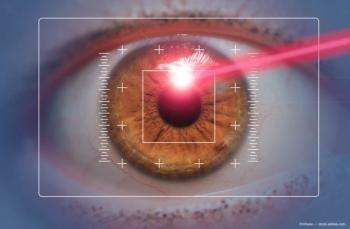
IntraLASIK yields benefits for conventional and wavefront-guided procedures
San Francisco—Whether using a conventional ablation technique or CustomCornea (Alcon Laboratories) wavefront-guided procedures, all-laser LASIK (IntraLASIK) performed with femtosecond microkeratome (IntraLase) flap creation affords better efficacy and safety outcomes compared with surgery performed with mechanical microkeratome-created flaps, according to the results of a retrospective study conducted by Ella G. Faktorovich, MD.
Dr. Faktorovich, director, cornea and refractive surgery, Pacific Vision Institute, San Francisco, analyzed outcomes for age- and refraction-matched cohorts of patients undergoing LASIK at her institution. The wavefront group included 226 eyes, and there were 265 eyes in the conventional LASIK group. The Hansatome (Bausch & Lomb) microkeratome was the mechanical microkeratome used, and all ablations were performed with the LADARVision 4000 laser (Alcon).
Outcomes were assessed at 1, 3, and 6 months postoperatively and showed better uncorrected visual acuity (UCVA) accompanied by less loss of best-corrected visual acuity (BCVA) for the femtosecond laser groups compared with those undergoing mechanical microkeratome flap creation, especially at 3 months. At 6 months, there was less induced cylinder in the femtosecond laser group among the eyes undergoing conventional LASIK.
"While it would be desirable to have a prospective study with a larger sample size and compare the two treatments in fellow eyes, our results do favor the all-laser procedure, and there are a number of possible reasons that could account for some of the differences observed," said Dr. Faktorovich.
"When using the femtosecond laser, however, we do think it is important to use a technique that will minimize opaque bubble layer formation, and we are continuing to monitor our settings to keep it and any problems with transient light sensitivity at a minimum," said Dr. Faktorovich.
Flap creation with the Hansatome microkeratome was performed using the 160-μm plate and 9.5-mm ring. The femtosecond laser procedure was performed using the following parameters: 250-μm pocket; spot separation 12/10, raster energy 1.6 to 2.0 mJ, side cut energy 1.6 to 1.9 mJ, 45° side cut, and 45° hinge. Intended flap thickness was 120 μm and flap diameter was 9.5 mm.
"Our technique aims to create a narrow hinge because we treat many Asian patients with smaller-diameter corneas in which a narrow hinge will allow for fuller bed exposure," explained Dr. Faktorovich.
The patients in the four study groups ranged in age from 22 to 63 years, and they had a mean age of about 37 years. Mean SE in the four groups ranged from –3.78 to –4.36 D.
The eyes in the wavefront group all had <1 D of cylinder since the treatments were performed prior to approval of the expanded range for CustomCornea treatment, whereas cylinder ranged up to 3.5 D in the conventional LASIK groups.
Newsletter
Don’t miss out—get Ophthalmology Times updates on the latest clinical advancements and expert interviews, straight to your inbox.
















































.png)


